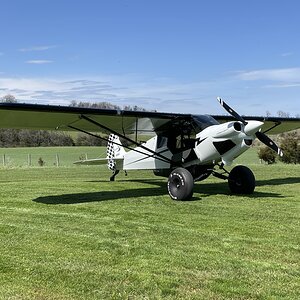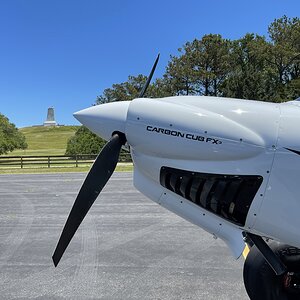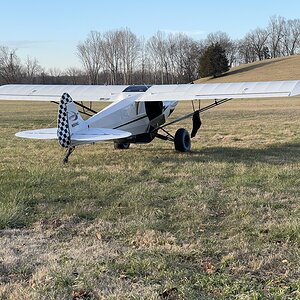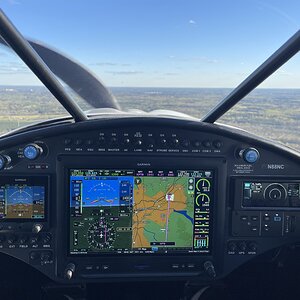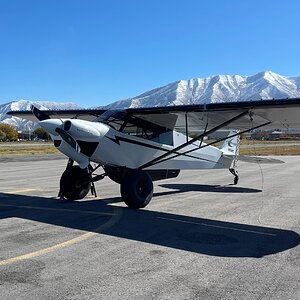GVFlyer
Well-known member
- Joined
- Feb 22, 2002
- Posts
- 1,461
It's a strange day when I find myself coming to the defence of a Global Express operator...
The Jungle Jet costs $21 mil because the Barbie Jet costs 21 mil.
You keep harping on the expense of owning a Gulfstream without really knowing what you're talking about. Let's review the concept of retained value again, this time with a few examples. GIV serial number 1280 is currently under contract for $21.75 million. In 1995 it sold new for $24 million, thus it cost them only $2.25 million to own the airplane for just under 10 years. To put this in perspective the average GIV lease is $200,000 a month or $2.4 million a year. Even in the recent recessionary period, Gulfstreams have faired well. S/N 1422 which sold for just over $30 million in 2001 will sell for $26 million and 1470 which sold for slightly under $32 million in early 2002 sold for 28 million in mid-2004. You can see that direct operating costs only tell a part of the story, you must also factor in how quickly your Legacy is losing value.
First a little math refresher - reducing a quantity by one order of magnitude is the same as multiplying it by 0.1. Thus for your statement to be true, the DOC for the Legacy would have to be $191.20/hr. The actual Direct Operating Costs are:
Embraer Legacy - $1615/hr
Gulfstream G550 - $1912/hr
(Conklin and DeDecker, Fall 2004)
Remember the G550 is a 91,000 pound jet and the Legacy is limited to 49,604. Based on weight and operating cost which airplane is more efficient? The G550 is moving 55% more airplane for a DOC that is only 18.5% greater. At the Legacy's efficiency level, if it weighed 91,000 pounds it would cost $2495/hr to operate.
Gulfstream Dispatch Reliability (NBAA)
GIV/G300/G400 - 99.85%
GV/G550 - 99.75%
Your experience in the Legacy is anecdotal and probably apocryphal.
Again I ask you for the source of your Legacy dispatch reliability statistics.
From the Embraer Legacy press release, "From London, the Legacy can make New York City if the winds are only slightly lighter than normal..."
The 240 cu. ft. baggage area on the Legacy is a holdover from the Legacy's true purpose as a regional airliner when it was required to hold bags for 50 passengers and is a waste of cabin space on an aircraft that already has a small cabin. Gulfstream was able to increase the size of the G550's baggage area, which is accessable in flight, to 226 cu. ft. for it's 14 passengers (certificated to 19 plus 3 crew) by using conformal tanks for the vacuum lav and water systems without diminishing the size of the cabin.
Have you actually been on a G550, a Global, a CL604, a Falcon 900Ex, or a Falcon 2000EX? All have quieter, more spacious, better conceived cockpits than the Legacy.
If this is true, why is the Gulfstream proportionally less expensive to operate and offer better reliability rates?
The reason the Legacy doesn't go to FL510 is because it has neither the wing nor the thrust for it. The Spanish Gamesa wing is a collection of aerodynamic kludges, but at least it is not made in a third world country as is the rest of the Legacy.
That's simply not true. The reason I can go M0.83-84 at FL490 at about the same fuel burns you get at M .80 at FL390 is because I can go to FL490. The higher I go the less my specific fuel consumption is.
Max differential is a structural limit determined during development; Mmo is a FAR Part 25 limit derived from flight test.
PSID goes up according to a pressurization schedule until max PSID is reached; thereafter PSID does not go up as you climb, cabin altitude does. That's why at 8.0 PSID your Legacy has a 7400 cabin at FL370, an 8100 foot cabin at FL390 and would have an 8800 ft. cabin at FL410. Gulfstream has T-Category records for going above FL550 in the GIV and FL530 in the GV. On these flights cabin PSID regulated at 9.88 for the GIV and 10.48 for the GV, the same as if they were at their normal Max altitudes of FL450 and FL510 respectively.
GV
LegacyDriver said:(in response to GEXDriver) What does Legaco better?
1) Acquisition Cost - a 30 million dollar jet for 21 million (the econmy of scale in the RJ absorbed the difference) is way cheaper than the jets you cite.
--
The Jungle Jet costs $21 mil because the Barbie Jet costs 21 mil.
You keep harping on the expense of owning a Gulfstream without really knowing what you're talking about. Let's review the concept of retained value again, this time with a few examples. GIV serial number 1280 is currently under contract for $21.75 million. In 1995 it sold new for $24 million, thus it cost them only $2.25 million to own the airplane for just under 10 years. To put this in perspective the average GIV lease is $200,000 a month or $2.4 million a year. Even in the recent recessionary period, Gulfstreams have faired well. S/N 1422 which sold for just over $30 million in 2001 will sell for $26 million and 1470 which sold for slightly under $32 million in early 2002 sold for 28 million in mid-2004. You can see that direct operating costs only tell a part of the story, you must also factor in how quickly your Legacy is losing value.
LegacyDriver said:2) DOC - it is cheaper to operate by an order of magnitude.
--
First a little math refresher - reducing a quantity by one order of magnitude is the same as multiplying it by 0.1. Thus for your statement to be true, the DOC for the Legacy would have to be $191.20/hr. The actual Direct Operating Costs are:
Embraer Legacy - $1615/hr
Gulfstream G550 - $1912/hr
(Conklin and DeDecker, Fall 2004)
Remember the G550 is a 91,000 pound jet and the Legacy is limited to 49,604. Based on weight and operating cost which airplane is more efficient? The G550 is moving 55% more airplane for a DOC that is only 18.5% greater. At the Legacy's efficiency level, if it weighed 91,000 pounds it would cost $2495/hr to operate.
3) Reliability - the Legacy is the most reliable jet in the world and if you think otherwise you are a complete fool! This is a 99.5 percent dispatch rate unadjusted! (Not Cessna or Gulfstream BS reliability where 80 is 99.5). In four years and over 2000 cycles I have aborted ZERO missions.
- -
Gulfstream Dispatch Reliability (NBAA)
GIV/G300/G400 - 99.85%
GV/G550 - 99.75%
Your experience in the Legacy is anecdotal and probably apocryphal.
Again I ask you for the source of your Legacy dispatch reliability statistics.
4) Adaptability - short haul mondo cycle or long haul coast-to-coast / NY to London the Legacy doesn't care and its economics remain the same--the lowest.
From the Embraer Legacy press release, "From London, the Legacy can make New York City if the winds are only slightly lighter than normal..."
5) Baggage Space - Nuff said.
The 240 cu. ft. baggage area on the Legacy is a holdover from the Legacy's true purpose as a regional airliner when it was required to hold bags for 50 passengers and is a waste of cabin space on an aircraft that already has a small cabin. Gulfstream was able to increase the size of the G550's baggage area, which is accessable in flight, to 226 cu. ft. for it's 14 passengers (certificated to 19 plus 3 crew) by using conformal tanks for the vacuum lav and water systems without diminishing the size of the cabin.
6) Cockpit Ergonomics - Nothing touches it that I have seen short of the EMB-170.
Have you actually been on a G550, a Global, a CL604, a Falcon 900Ex, or a Falcon 2000EX? All have quieter, more spacious, better conceived cockpits than the Legacy.
Other bs on your part...
The airplane doesn't go to 510 and doesn't use a 12 psid cabin for a reason: docs! Higher pressure is more fatigue, more inspections, more mx, lower reliability and higher costs!
If this is true, why is the Gulfstream proportionally less expensive to operate and offer better reliability rates?
The reason the Legacy doesn't go to FL510 is because it has neither the wing nor the thrust for it. The Spanish Gamesa wing is a collection of aerodynamic kludges, but at least it is not made in a third world country as is the rest of the Legacy.
The plane was made to be reliable. FL450 is not going to help the bottom line so it is not included.
That's simply not true. The reason I can go M0.83-84 at FL490 at about the same fuel burns you get at M .80 at FL390 is because I can go to FL490. The higher I go the less my specific fuel consumption is.
Max diff is an artificial limit just as .80 is!
Max differential is a structural limit determined during development; Mmo is a FAR Part 25 limit derived from flight test.
I have also never gone to 410 but I know the plane can do it by looking at my diff. At 390 I am nowhere near 8.3 psid. Obviously EMB felt the added pressure would not raise the doc of the airplane.
PSID goes up according to a pressurization schedule until max PSID is reached; thereafter PSID does not go up as you climb, cabin altitude does. That's why at 8.0 PSID your Legacy has a 7400 cabin at FL370, an 8100 foot cabin at FL390 and would have an 8800 ft. cabin at FL410. Gulfstream has T-Category records for going above FL550 in the GIV and FL530 in the GV. On these flights cabin PSID regulated at 9.88 for the GIV and 10.48 for the GV, the same as if they were at their normal Max altitudes of FL450 and FL510 respectively.
GV

